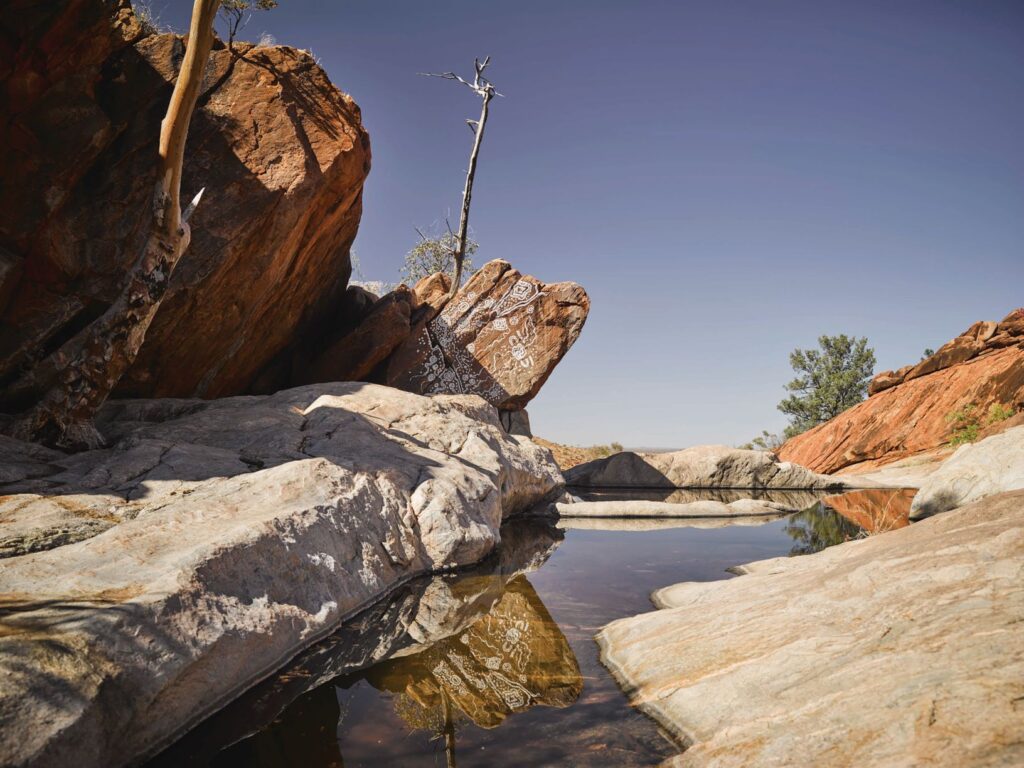The National Museum of Australia’s (NMA) newest exhibition is a spectacular collaboration that sees what’s old and new harmoniously unite.
Painting on Country offers a rare glimpse into the ancient practice of desert art, and sees evanescent traditional indigenous rock paintings made permanent through a stunning six-image photography series that captures the works in the gorgeous rugged landscapes of remote South Australia bathed in beguiling natural light.
The rock art was produced by five senior artists from Tjungu Palya art centre in the Anangu Pitjantjatjara Yankunytjatjara (APY) Lands in South Australia, who painted directly onto country with traditional ground pigment.
These works were captured in a series of large-format photographs which were bought by art collector Christina Kennedy who has loaned them to the NMA.

They are accompanied on display by a further 27 contextual photographs of the artists at work.
Head of Centre of Indigenous Knowledges, Margo Neale, says that through the rock works, the artists have “signed” the land in a way that carries contemporary relevance.
“It’s a way of showing continuation of culture and the fusion of the ancient and the contemporary,” she says.
“They’re so innovative and yet so traditional, and they offer a challenge to the normal view of rock art as permanent.”
Neale says the collaborative exhibition is an excellent example of how a continuous culture can be made widely accessible in a way rock art alone can’t, and be made relevant to a younger generation.
“These works actually straddle the ancient and the contemporary in a way that Aboriginal culture does. This fusion in fact is a testimony to the practices of the continuing culture.
“These white rock paintings washed off with the first rains, but they live on in an Indigenous form,” she says.
She says all Indigenous art has a connection to country, but that in the case of these works it’s particularly profound.
“You can’t get a more powerful statement about that than these works, which are paintings about country, on country, rocks, with country, the ochres, to return to the country through the rains and seep down back in to nourishing the land both spiritually, ancestrally and physically.”

Artist Keith Stevens says in creating the rock art they re-explored ancient artistic practices.
“We wanted them to be big photographs because where we did the painting was on really large rocks inside big landscape, some have rock holes or special rocks and we wanted for those to be seen along with their stories,” he says.
Christina Kennedy says she was blown away by the ingenuity and creativity of the artists to conceive these timeless stories captured with the new technology when she first saw them.
“They were these tiny little images on a computer; rock art on stunning landscapes.
“It was temporary, it was to share a cultural story, to teach children and to showcase this beautiful country. It was a fascinating new concept and I was hooked,” she says.
Painting on Country is on display at the NMA’s First Australians Focus Gallery until 29 September. Free entry; nma.gov.au
For more:



